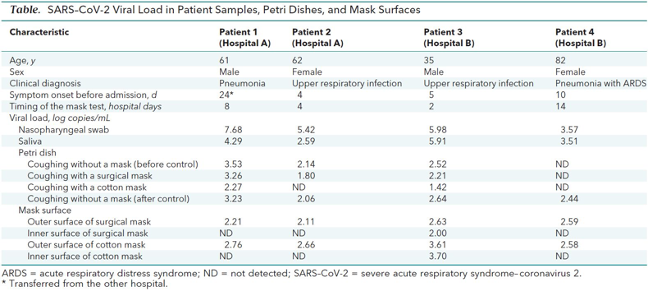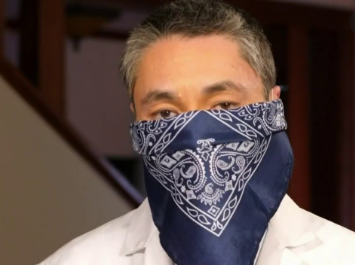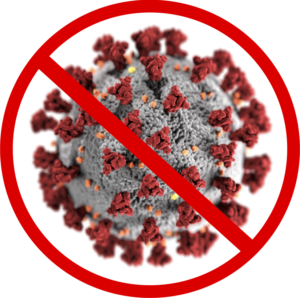Last Sunday, a friend sent me a link to a blog post about masks, asking for my opinion. What I discovered is a case study in how easily misinformation is misinterpreted, distorted, and disseminated when science is done in COVID-19 time. I hesitate to share the link because the study is so flawed and the tone of the blog is offensive, but you are forewarned. Here.
In fact, here’s the offensive part: “Masks won’t save us. A healthy immune system will. Masks serve to instill fear. Government laws seek to control the masses through fear and gestapo tactics.” Anything that uses that tone is immediately suspect, but the paper cited is from a first line journal, so I decided to take a look.
The primary reference is a Korean paper, actually a letter to the editor, in the Annals of Internal Medicine. Normally this is an excellent journal, but this bit of research is so deeply flawed that it is astonishing they accepted it. Only in COVID time does this get published.
The paper purports to look at how effective surgical masks and cloth masks are in reducing the spread of the SARS-CoV-2 virus. They identified four subjects and had them cough onto a Petri dish both with and without masks on. Here are the results:

How is it flawed? Let me count the ways.
- The study included only four patients. This might be justifiable if subjects were hard to find or if there were no variability among subjects, but neither of these seem to hold.
- The authors had subjects cough on a Petri dish 20 cm from their mouth five times. That’s 8 inches! The whole point of a mask is to limit the distance of spread. We know that droplets and aerosols will escape around the sides of a mask. If you hold the Petri dish out while someone coughs five times, there will be a small cloud accumulating close to the subject and landing on the dish, even if the wear a mask. The real question is what is the exposure 3-6 feet from the person coughing.
- The authors did no analysis of the data. They claim to have calculated the median, but after trying every conceivable way to do that, I could not match their results. I’ll walk through the data below. Even with all of that, the viral load on the Petri dish was lower with masks than without.
- With no further justification, they conclude that “Neither surgical nor cotton masks effectively filtered SARS–CoV-2 during coughs by infected patients”
One thing to consider in these data is the fact that there are multiple non-detects (ND), meaning the levels were below the threshold for their test. They don’t mention what this threshold is, but we have very sensitive tests for the virus, so a non-detect means almost no virus was present. I would be inclined to consider these as a value of zero. A second alternative is to give them the value of the detection limit. A third option, which they seem to have used is to consider them as missing values and most of those occurred when the subjects were wearing masks. This is straight out data manipulation since you are throwing out the lowest values. I took the data and calculated averages and median values both with ND=0 and ND=missing value. Here’s what I got.
| Average | Median ND=0 | Median ND=missing | Paper | |
| No mask | 2.32 | 2.48 | 2.73 | 2.56 |
| Surgical mask | 1.82 | 2.01 | 2.42 | 2.42 |
| Cloth mask | 0.92 | 0.71 | 1.85 | 1.85 |
I have no idea how they got the value for no mask, but it is clear they chose a way of looking at the data that is most likely to minimize the observed effect of the mask. And even then, using the mask is associated with a lower viral load. In other words, this is a flawed study design without enough subjects that used a flawed interpretation of the data to draw a flawed conclusion. Other than that, it’s a great paper. The only thing I learned from it is not to stand 8 inches from someone who is actively coughing.
This is a case study not only in the spread of misinformation, but also in the deep flaws in the conventional process for research publication in the context of this pandemic. It typically takes five months for a paper to go from manuscript to publication. The entire pandemic hasn’t lasted five months. When you try to rush publication, you wind up with abominations like this paper. Therein lies the challenge of science in COVID time.


